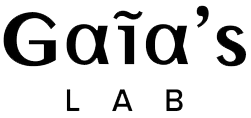Skincare Acronyms - Why Should we Care?

Alpha-Hydroxy Acids (AHA)
AHAs are chemicals that reduce signs of photo-aging such as rough skin, fine lines, and uneven pigmentation. AHAs are useful because they stimulate cellular turnover which actually naturally slows down as we age.
This happens because AHAs exfoliate the top layer of the skin, removing dead skin cells that can contribute to the appearance of wrinkles. These acids are often naturally occurring and are most commonly derived from the sugars of plants. Some common examples are:
- Glycolic Acid which comes from Sugar Cane
- Lactic Acid which comes from Milk
- Tartaric Acid which comes from Grapes
- Citric Acid which comes from - you guessed it - citrus fruits
- Malic Acid which comes from Apples
- Mandelic Acid which comes from bitter almonds
The best known in skincare is probably glycolic acid. You can find it in your nail care products, hair care, and in chemical peel products for your skin. We use glycolic acid in our products (free of formaldehyde).
Since AHAs are particularly potent, it's important to incorporate sun protection products into your routine before using a topical AHA. Since AHAs slough off dead skin, it's important to protect your facial skin from the elements before putting it through trauma like an exfoliation routine.
Beta-Hydroxy Acid (BHA)
Salicylic acid, a BHA, is super helpful if your skin is oily or acne prone. BHAs have the ability to remove dead skin cells, but in particular work as a mild anti-bacterial agent. This is why you see BHAs used in anti-dandruff shampoos and in skin conditioning products.
BHAs enhance the rate of top layer skin exfoliation in much the same way as alpha-hydroxy acids (AHAs), although with minimal irritation. Since BHAs are oil soluble, they can easily penetrate the skin and are also anti-inflammatory and anti-comedogenic - making it your best friend to fight acne.
Sources:
“Epidermal and Dermal Effects of Topical Lactic Acid - PubMed Labs.” Advances in Pediatrics., U.S. National Library of Medicine, 1996, www.ncbi.nlm.nih.gov/labs/pubmed/8784274-epidermal-and-dermal-effects-of-topical-lactic-acid/
Shelef, L. A., & Liang, P. (1982). Antibacterial effects of butylated hydroxyanisole (BHA) against Bacillus species. Journal of Food Science, 47(3), 796-799.
Smith, W. P. (1996). Comparative effectiveness of α‐hydroxy acids on skin properties. International journal of cosmetic science, 18(2), 75-83.

Leave a comment